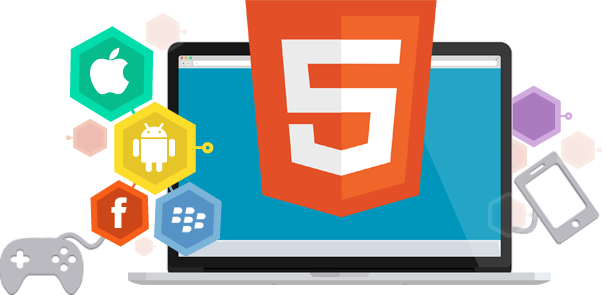Pulse of Information
Your source for the latest insights and updates.
HTML5: The Superhero of the Web
Discover how HTML5 revolutionizes web design and development! Unleash the superhero power for your websites and boost user engagement today!
Understanding the Basics of HTML5: What Makes It a Web Superhero?
HTML5 is the latest version of the Hypertext Markup Language, which is the standard language for creating web pages. This robust framework not only provides the basic structure for web content but also introduces a wealth of new features that enhance multimedia integration and user interaction. One of the most significant aspects of HTML5 is its ability to support audio and video natively, eliminating the need for additional plugins. Furthermore, with new semantic elements like <article>, <section>, and <footer>, developers can create more meaningful and organized web content, improving both accessibility and SEO.
The web superhero status of HTML5 is also attributed to its enhanced capabilities for creating web applications. Features such as the Canvas element allow for dynamic graphics and animations, while the Geolocation API enables location-based services. In addition, the use of local storage permits developers to store data on the user's browser, ensuring a seamless experience even when offline. With such powerful tools at their disposal, web creators can craft rich, interactive experiences that engage users and drive website traffic effectively.

Top 5 Features of HTML5 That Revolutionized Web Development
HTML5 introduced a plethora of features that have significantly transformed web development. One of the standout attributes is the native support for multimedia elements such as <audio> and <video>. Prior to HTML5, developers had to rely on third-party plugins like Flash to embed multimedia, which often led to compatibility and performance issues. With HTML5, embedding multimedia content has become straightforward and more accessible, allowing for a richer user experience across a variety of devices.
Another revolutionary feature is the canvas element, which enables dynamic, scriptable rendering of 2D shapes and images directly in the browser. This capability has opened up new avenues for graphic design and game development on the web without the need for additional software. Furthermore, HTML5 has enhanced form controls by introducing types like email and date, ensuring better data validation and user input handling. These innovations facilitate the creation of more interactive and engaging web applications, streamlining both development and user interaction.
How HTML5 Enhances User Experience: A Deep Dive into Its Capabilities
HTML5 has revolutionized the way websites interact with users, offering a plethora of new features that enhance user experience significantly. One of the most notable advancements is the introduction of semantic elements, which allow developers to define the structure of their content more clearly. This leads to better accessibility and improved search engine optimization (SEO), as browsers and assistive technologies can interpret the content more effectively. Furthermore, the canvas element facilitates dynamic graphic rendering, enabling developers to create interactive visual interfaces that engage users in an immersive experience.
Another remarkable capability of HTML5 is its support for multimedia elements, such as audio and video tags, which eliminate the need for third-party plugins. This streamlined integration allows for seamless playback across different devices and browsers, ensuring that users have consistent access to media content. Additionally, features like local storage and geolocation empower developers to create personalized web applications that respond to user preferences and contexts, further enhancing the overall user journey.